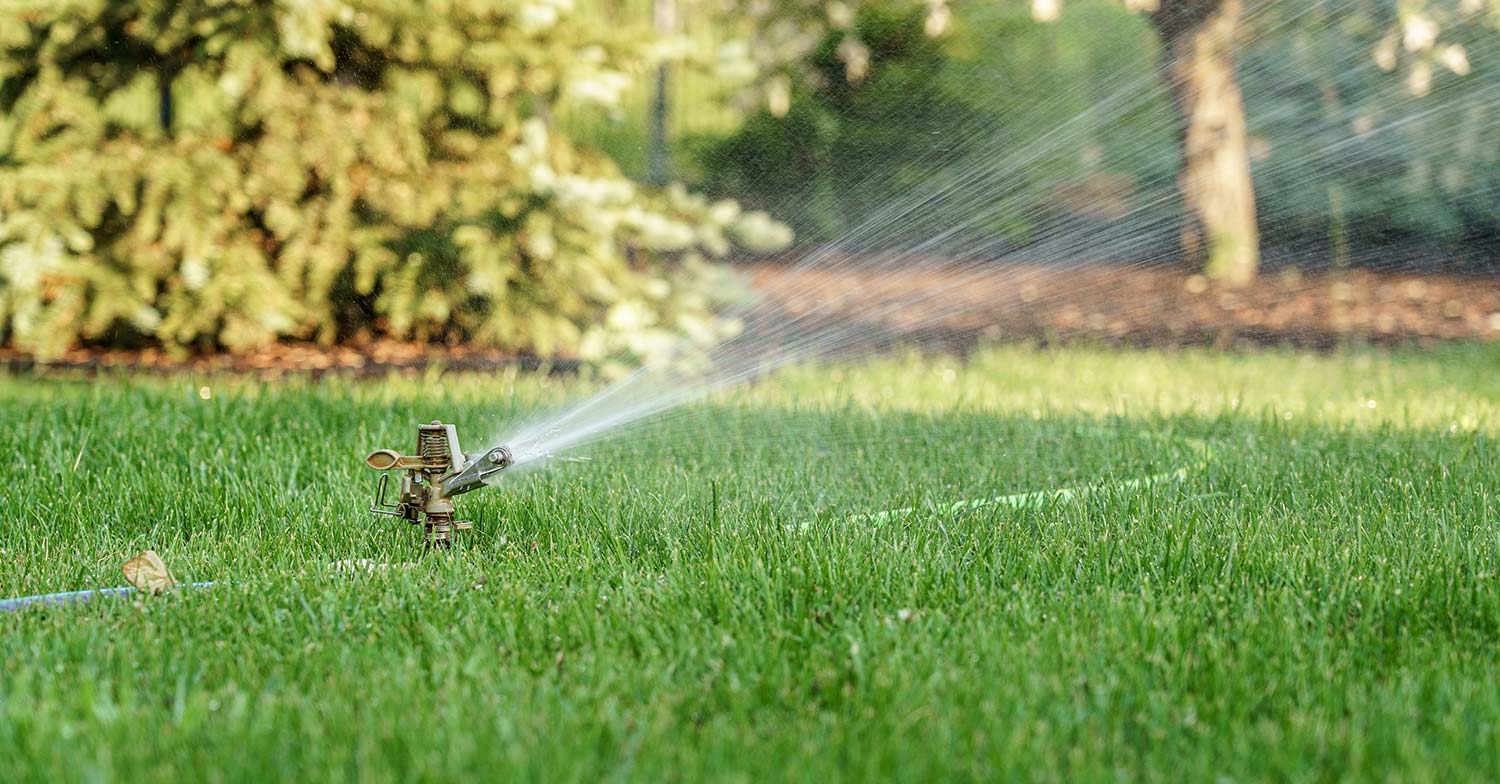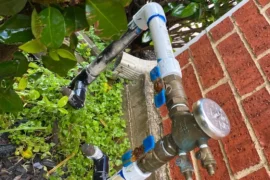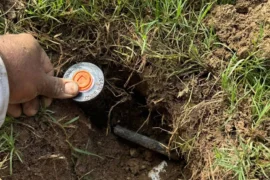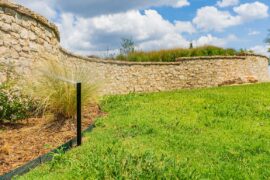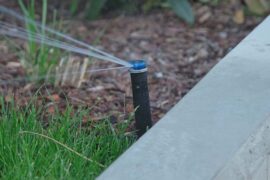As we embrace the warm embrace of spring, homeowners with irrigation systems face a crucial task: de-winterizing their lawn sprinklers. Neglecting this annual ritual can lead to a myriad of problems, some of which can be costly and time-consuming to fix.
Understanding the Need for De-Winterization
The Science Behind Freezing and Expanding Water
The fundamental principle behind the need for de-winterization lies in the unique properties of water. Water is one of the few substances that expand when frozen. This expansion is not a trivial increase in volume; it can exert a significant force. In the confined space of a sprinkler system’s pipes, this force can be disastrous.
The pipes, typically made of materials like PVC or metal, are not designed to accommodate such expansion, leading to potential ruptures or cracks. As winter gives way to spring, the ice melts, but the damage caused by the expansion doesn’t simply vanish. Instead, what you may find come spring are weakened pipes at risk of leaking or bursting once water pressure is reintroduced. This necessitates the thorough inspection and cautious reactivation of your sprinkler system as part of the de-winterization process.
The Anatomy of a Sprinkler System
To fully appreciate the importance of de-winterization, it’s essential to understand what makes up a lawn sprinkler system. This system is more than just a series of hoses and sprinklers; it’s an intricate network designed for efficient and effective water distribution. A typical setup includes a main water line, which branches off into various smaller pipes leading to individual sprinkler heads.
Valves control the flow of water in these pipes, and the sprinkler heads are designed to distribute water evenly across your lawn. While these components are designed for durability, they are not immune to the effects of freezing temperatures. The valves, for instance, can seize or break if water within them freezes and expands. Similarly, sprinkler heads, often partially exposed above ground, are vulnerable to damage from ice and cold.
Risks of Ignoring Winter’s Aftermath
The implications of neglecting to de-winterize your sprinkler system are multifaceted. Initially, the damage may remain hidden, lurking beneath the surface. However, once you reactivate the system, the consequences become glaringly evident. Pipes weakened by ice expansion can crack or burst under pressure, leading to significant water leakage. This not only wastes water but can also cause water damage to your property.
In addition, a malfunctioning sprinkler system can lead to uneven watering of your lawn, creating patches of overwatered or underwatered areas. This uneven distribution can stress your lawn, making it susceptible to diseases and pests. Furthermore, the cost of repairing or replacing damaged components can be substantial, not to mention the inconvenience and time lost in dealing with these issues. By proactively de-winterizing your system, you can identify and address potential problems before they escalate, ensuring your sprinkler system is ready to perform efficiently in the warmer months ahead.
Consequences of Not De-Winterizing
Pipe Damage and Leakage
The most immediate consequence of not de-winterizing is damaged pipes. Frozen water can cause pipes to crack or burst. When the system is eventually turned on, these damaged pipes can lead to significant water leakage, potentially damaging your property and increasing water bills.
Valve and Sprinkler Head Malfunctions
Another significant issue stemming from not de-winterizing your system is the malfunctioning of valves and sprinkler heads. These components are crucial for the controlled and efficient distribution of water across your lawn. When water freezes and expands within these parts, it can lead to blockages or mechanical failures. This malfunctioning can manifest in various ways: valves may fail to open or close properly, leading to areas of your lawn being either underwatered or flooded.
Sprinkler heads may also suffer, either not activating at all or spraying water unevenly. This inconsistency can result in uneven growth or dry patches on your lawn, compromising its aesthetic and health. In some cases, the sprinkler heads may even burst or detach, requiring complete replacement. Consistent and adequate water distribution is vital for lawn health, and these malfunctions can undermine the primary purpose of your sprinkler system, making it ineffective in maintaining your garden or lawn.
The Financial Burden of Repairs
Finally, the financial implications of not de-winterizing your sprinkler system cannot be understated. Addressing the damage caused by freezing temperatures often requires professional intervention. If the damage is extensive, it might not just be a matter of simple repairs; entire sections of the system may need to be replaced. This includes not only the cost of new pipes, valves, and sprinkler heads but also the labor costs for installation and repair. In some cases, the system may require a complete overhaul, which can be as expensive as installing a new system.
Furthermore, undetected leaks or malfunctions can lead to increased water usage, which will reflect in your utility bills. It’s also worth noting that these repairs often come at the busiest time for irrigation professionals – the beginning of the spring season – which could lead to delays and further complications in getting your system back to optimal functionality. In the long run, the cost of regular maintenance and proper winterization is far less than the potential repair or replacement costs resulting from neglect.
Rewards of Routine Sprinkler System Maintenance
Ensuring System Efficiency and Longevity
Regular maintenance, including the de-winterization of your sprinkler system, significantly enhances its efficiency and extends its lifespan. Winterizing your system helps to prevent water from freezing and expanding inside the pipes, which can cause them to burst and lead to extensive damage. Conversely, de-winterizing in the spring ensures that the system operates smoothly, providing optimal irrigation without leaks or malfunctions.
Saving Money in the Long Run
While there’s an upfront cost to de-winterizing and regular maintenance, it’s far more economical than the hefty bills for repairing or replacing a damaged system. The cost of installing a new sprinkler system can range between $2,400 and $4,200, and even more for larger yards. Regular maintenance, including spring activation services, is a comparatively minor investment that helps avoid these substantial expenses.
Protecting Your Landscape Investment
A well-maintained sprinkler system ensures that your landscape receives the right amount of water at the right time. This not only nurtures the health of your lawn and plants but also contributes to the overall aesthetics of your property. Efficient watering techniques supported by a properly functioning irrigation system can lead to a lush, vibrant outdoor space.
In conclusion, de-winterizing your lawn sprinkler system is an essential task that holds significant benefits for the health and beauty of your landscape, as well as your wallet. Whether you choose to undertake this task yourself or enlist professional help, understanding the process and its importance is key to ensuring a vibrant, well-maintained outdoor space.

